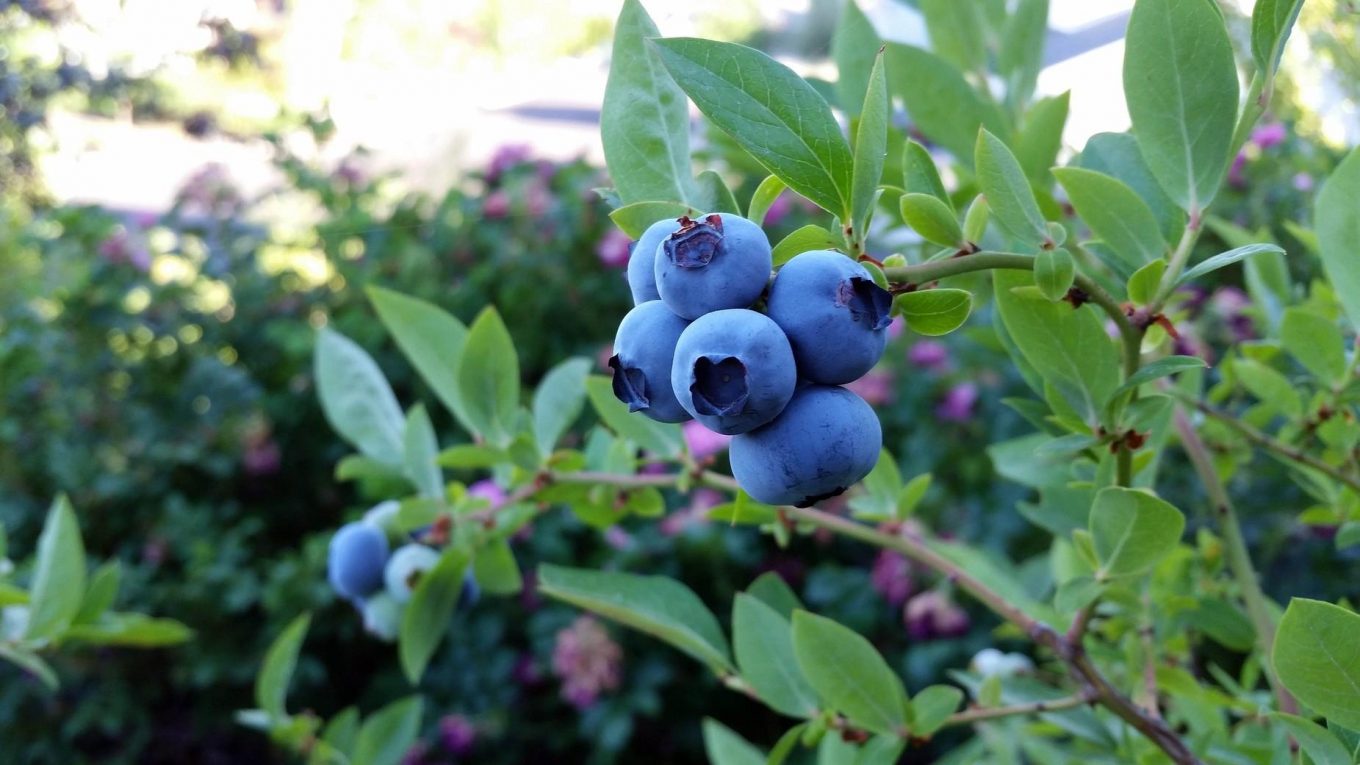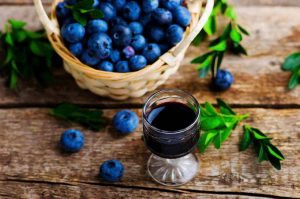Blueberry Wine Gets Serious
Almost a decade ago, old friends Michael Terrien and Eric Martin were enjoying themselves at a bachelor party weekend on Moosehead Lake in their native Maine. The festivities had drained the beverage options to the dregs: a wine made from the state’s official fruit, wild blueberries. The wine was sweet, they say, but a bitter end for the weekend and for the poor blueberries that gave their life for such a mediocre wine. Surely, they thought, this 10,000-year-old fruit, native to the state they loved, was capable of more.
Terrien had the right background to find out. He had made his name making wine at Hanzell and Acacia wineries in California before starting his own eponymous brand and becoming a partner at Obsidian Wine Co. , working with grapes from across California’s North Coast.
After some experimentation, he and Martin released their first sparkling blueberry wine in 2015, Bluet . It sold out quickly. Today, they make two wines: one Méthode Champenoise and the other using the Charmat method , the same manner in which Prosecco is produced. Terrien leveraged his industry connections to find distributors in Maine and beyond, and the brand began to win over skeptical wine fans. “Bluet’s most recent version of the Prosecco-style wine, bottled with a screw cap, smelled like violets, roses, and, yes, blueberries,” wrote Eric Asimov in the New York Times in August 2019. “It was exuberant yet dry and savory, and, at 7 percent alcohol, deliciously easy to drink.” He deemed the 2017 traditional method wine “more contemplative … deeper, subtler, lightly savory, and quietly complex.” Both left him wondering: “Why has this never been done before?”
A blue revelation
It’s a good question, given that blueberries turn out to be well-suited to winemaking in many ways. The same antioxidants that make wild blueberries a so-called superfruit also protect and stabilize the fermenting wine . “It does have tannin, obviously it has pigment, and well, magical antioxidants,” Terrien says. “It’s totally possible to go without sulfites.”
Hermit Woods , over the border in New Hampshire, has been making wines from various local fruits for a dozen years. “We’ve found blueberries to be one of the best fruits,” says co-founder Bob Manley, “and the best way for us to get some of the characteristics that we like to have in our wines that make our wines more reminiscent of a classic wine, as opposed to a traditional fruit wine that you might typically find in the Northeast.” Hermit Woods uses Maine wild blueberries in several wines, and their top-selling flagship wines, the Petite Blue and Petite Blue Reserve, are pure blueberry wines.
That aligns with the inspiration driving Bluet and a handful of other new wineries in Maine. Dan Roche, Joe Appel, and Emily Smith were buyers at Rosemont Market and Bakery , a popular gourmet market with several locations across Maine, when they met Terrien and tasted the Bluet wines. They founded RAS and produced their first vintage in the middle of the pandemic. “It wasn’t that we necessarily wanted to make fruit wines,” says Appel. “We love wine made with the sort of allegiance to terroir and to place and to something handmade, and we live in Maine.” Trucking in fruit or juice didn’t fit that mindset, so once they saw the potential of wild blueberries, they were ready to move ahead.



Wild blueberries are one of the few plants that will grow in the acidic, granitic soils left behind in what is now Maine, at the end of the last ice age, so in that sense, they reflect the terroir of the state. Bluet sources from three different farms, and Terrien says differences between them are readily apparent in the glass. Appel concurs, “When we get fruit from different growers, we sense different wine personalities. It would be really cool if we could start bottling site-specific wines that say, this fruit is from Down East, this is from Mid Coast, and so on.” Bluet is bottling a limited-production set of farm-specific wines before the year is out; they hope the wines will demonstrate that wild blueberries can be vehicles for expressing terroir just as grapes can.
“We’ve found blueberries to be one of the best fruits and the best way for us to get some of the characteristics that we like to have in our wines that make our wines more reminiscent of a classic wine, as opposed to a traditional fruit wine that you might typically find in the Northeast.”
The blue savior
This new application for wild blueberries comes at a time when growers across Maine have been struggling. Nancy McBrady, Director of Maine’s Bureau of Agriculture, Food, and Rural Resources , says the berries have a long history as a valued local product. Native Americans managed them, and canning them became popular around the time of the Civil War. In their fresh form, they didn’t travel well, but eventually IQF technology — individually quick frozen — made wild blueberries the mainstay fruit of the frozen food aisle. For the fresh fruit section, breeders developed hybrid varieties that stood up to the rigors of travel; about a decade ago, when growers around the world began growing hybrids in greater volumes, they began pushing into the frozen fruit space as well. The resulting drop in prices meant trouble for Maine’s farmers.
“My in-laws had built up a fresh direct retail market, but ten or 15 years ago, as they were getting older, they went 100% wholesale; the timing could not have been worse,” says Ron Howard, Farm Manager for the Brodis Blueberry Farm in Hope, Maine. Prices dropped off a cliff, and farms across Maine were going out of business. “Six years ago my father-in-law passed away, and we had to decide how we were going to keep the farm going. Every generation says they do not want to be the last.”
The Brodis farm began pulling out of the wholesale market. Howard’s mother-in-law began making jam, which has done well, and his son started a distillery, Blue Barren ; its first product was a wild blueberry eau-de-vie. When Terrien and Martin came looking to buy blueberries for their wine, it seemed an obvious opportunity for another value-added use for their wild blueberries.



This year, Bluet harvested 100 tons of blueberries, which should yield over 3,000 cases of wine — a tipping point in terms of making the project financially sustainable. With their growth and the introduction of newer brands like RAS, McBrady thinks that the wild blueberry wine industry could be “a game-changer for a number of small to mid-sized growers.”
Terrien sees room for a lot more wineries. “If we as an industry can say we make a wine that’s pure, has no sulfites, no additions, and is balanced, good, and good for you, that to me is a really strong pitch, not necessarily to the common palate, but to an emerging market, the so-called healthy hedonists, alongside kombucha, heritage ciders, sour ales, and alcoholic seltzers. Whole Foods has an entire section of canned beverages that are anything goes; that didn’t exist five years ago. If we continue with this conviction, then the Maine wild blueberry industry will be known for doing this crazy pure thing, which is not like anything else.”
3 Maine blueberry wines to try:
Read more:






